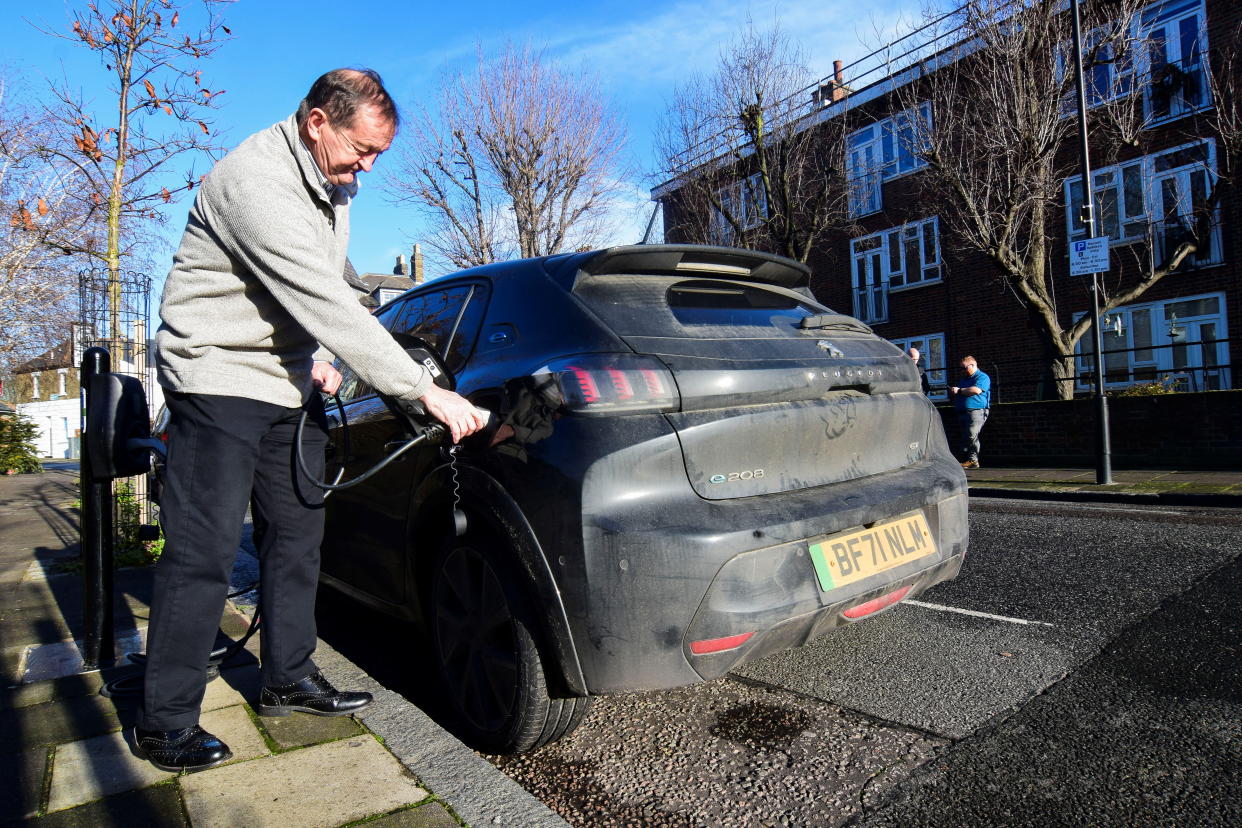Electric vehicle drivers forced to charge at home amid inadequate public network

The vast majority of electric vehicle owners charge their cars at home, with just 13% of charging happening in public streets, a survey shows.
Which? revealed that the current availability of public charge points is inadequate in some areas and the expansion of the charging network is happening too slowly.
There are four times as many public chargers per 100,000 people in London (102 chargers) as in the North West of England; while in Scotland there are 52 public charge points per 100,000 people, this compares with just 18 in Northern Ireland.
While the majority (93%) of EV owners are currently able to charge at home, the Competition and Markets Authority (CMA) estimates that over eight million households will not be able to charge an EV at home due to limited access to off-street parking.
Read more: Electric vehicles should be taxed to plug £35bn fiscal hole, say MPs
As the ban on sales of new petrol and diesel cars after 2030 approaches and more drivers switch to electric, Which? warns that the number of people who will soon be completely reliant on public charging is set to rise sharply.
Sue Davies, Which? head of consumer protection policy, said: “Our research shows that few electric vehicle owners currently rely on the public charging network, but this will have to change if millions of people are going to switch from petrol and diesel vehicles in the next decade.
“Improving the UK's flawed charging infrastructure will support more motorists to make the switch to a zero-emission vehicle. The current confusing and complex system needs to be quickly overhauled if the network is going to be ready for the ban on new fossil fuel cars in 2030.
“Charging must be easy, accessible and affordable if people are going to make the move to an electric car.”
Those who are unable to charge from home also face having to pay higher prices on the public network, with public charge points costing nearly 80% more than charging at home.
A separate survey showed that three of the five most significant barriers to consumers buying an EV related to anxiety about charging.
A third (33%) of those surveyed pointed to the lack of availability of charge points on long journeys and three in 10 (29%) raised concerns about a lack of charge points close to their home.
Read more: Self-driving cars: Calls to make companies liable for accidents not drivers
Since 2011, Government, local authorities and the charging infrastructure sector have successfully delivered a 3,000% increase in the number of standard public charge points.
However, as demand for EVs has surged – accounting for more than one in six new cars in 2021 – standard public charging infrastructure has struggled to keep pace.
Plug-in cars on the road grew by 280.3% between 2019 and 2021, but standard charge points increased by just 69.8% over the same period, figures published by the Society of Motor Manufacturers and Traders (SMMT) show.
Which? is calling for a significant increase in the number of charging stations both on-street and at service stations – particularly in areas where they are scarce – as well as requiring charge points that are currently restricted to specific brands to be available to all EVs.
Watch: Converting gas guzzlers to electric cars


